
- Usage in publication:
-
- Aftonian stage of deglaciation*
- Modifications:
-
- Overview
Summary:
Aftonian stage is name applied to interglacial stage during which the Aftonian soil, gumbotil, vegetal and other interglacial deposits were formed. This stage followed the oldest or Nebraskan stage of glaciation and preceded the second or Kansan stage of glaciation. The name, which was introduced by T.C. Chamberlin (Jour. Geol., v. 3, p. 270-277, 1895), was derived from exposures between Afton and Thayer, Iowa. Age is Pleistocene.
Source: US geologic names lexicon (USGS Bull. 896, p. 16).
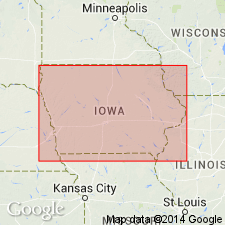
- Usage in publication:
-
- Afton terrane
- Modifications:
-
- Overview
- AAPG geologic province:
-
- Iowa shelf
- Forest City basin
Summary:
Pg. 148. Afton terrane. [Same as Aftonian of other geologists.] Sands, 40 feet thick, underlying Kansas till and overlying Nebraska till in Iowa. Present in Kansas as well. Age is Pleistocene.
Source: US geologic names lexicon (USGS Bull. 896, p. 16).
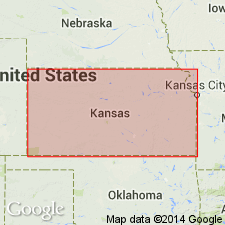
- Usage in publication:
-
- Aftonian age*
- Aftonian stage*
- Modifications:
-
- Overview
Summary:
Discussion of Pleistocene of Kansas. Aftonian age (stage), second time unit in Pleistocene, is an interglacial interval. Follows Nebraskan age (stage) and precedes Kansan age (stage).
Source: US geologic names lexicon (USGS Bull. 1200, p. 23-24).
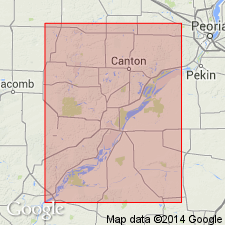
- Usage in publication:
-
- Aftonian stage*
- Modifications:
-
- Areal extent
- AAPG geologic province:
-
- Illinois basin
Summary:
Pg. 128-130. Aftonian stage represented in this area (Beardstown, Glasford, Havana, and Vermont quadrangles) by brown leached gravel, of early Aftonian or possibly Nebraskan age, and noncalcareous silt with wood, probably of early or middle Aftonian age.
Source: US geologic names lexicon (USGS Bull. 1200, p. 23-24).
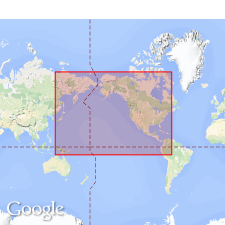
- Usage in publication:
-
- Aftonian Interglaciation*
- Modifications:
-
- Revised
Summary:
Name amended to Aftonian Interglaciation to comply with Stratigraphic Code adopted 1961.
Name derived from exposures between Afton and Thayer, southwestern Iowa.
Source: US geologic names lexicon (USGS Bull. 1200, p. 23-24).
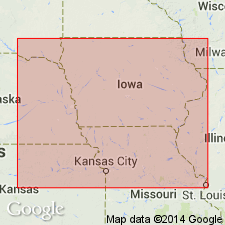
- Usage in publication:
-
- Aftonian interglaciation†
- Modifications:
-
- Abandoned
Summary:
Early concept that Aftonian paleosol developed on Nebraskan till is oversimplified. Also, the Pearlette ash which was once thought to be a single marker has now been determined to be three volcanic ash beds of different ages. A number of different tills occur at the land surface at different elevations, thus leading to the miscorrelation of tills. As a result, present knowledge leads to the conclusion that there is no single till or interglacial paleosol, but rather tills and paleosols of several ages that have been assigned to a single till or paleosol that can be assigned to the Aftonian. Name Aftonian abandoned and replaced by term pre-Illinoian. Pre-Illinoian is used as a time division in this report to apply to an interval that extends from 302,000 yrs or top of the middle middle Pleistocene back to 2,480,000 yrs into the Pliocene. Letter designations applied to the individual tills. Stratigraphic chart.
Source: GNU records (USGS DDS-6; Denver GNULEX).
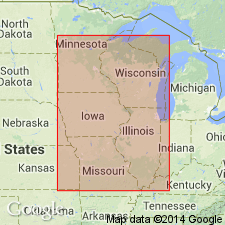
- Usage in publication:
-
- Aftonian interglaciation
- Modifications:
-
- Overview
- AAPG geologic province:
-
- Forest City basin
Summary:
Has been miscorrelated. Name has been applied to rocks of Yarmouth age as well as those of Aftonian age. "Their continued use in any context will lead to miscorrelation of stratigraphic units or assignment of erroneous numerical ages or age ranges to biotic assemblages and stratigraphic units. Redefinition ..." as "chronostratigraphic units ... will lead to confusion of stratigraphic nomenclature." Therefore, Afton paleosol should be applied only in type area near Afton, Iowa, and to paleosols that have been traced laterally from the area. Term "Aftonian interglaciation" abandoned in chapter by Hallberg (this volume, p. 11-15).
Source: GNU records (USGS DDS-6; Denver GNULEX).
For more information, please contact Nancy Stamm, Geologic Names Committee Secretary.
Asterisk (*) indicates published by U.S. Geological Survey authors.
"No current usage" (†) implies that a name has been abandoned or has fallen into disuse. Former usage and, if known, replacement name given in parentheses ( ).
Slash (/) indicates name conflicts with nomenclatural guidelines (CSN, 1933; ACSN, 1961, 1970; NACSN, 1983, 2005, 2021). May be explained within brackets ([ ]).

